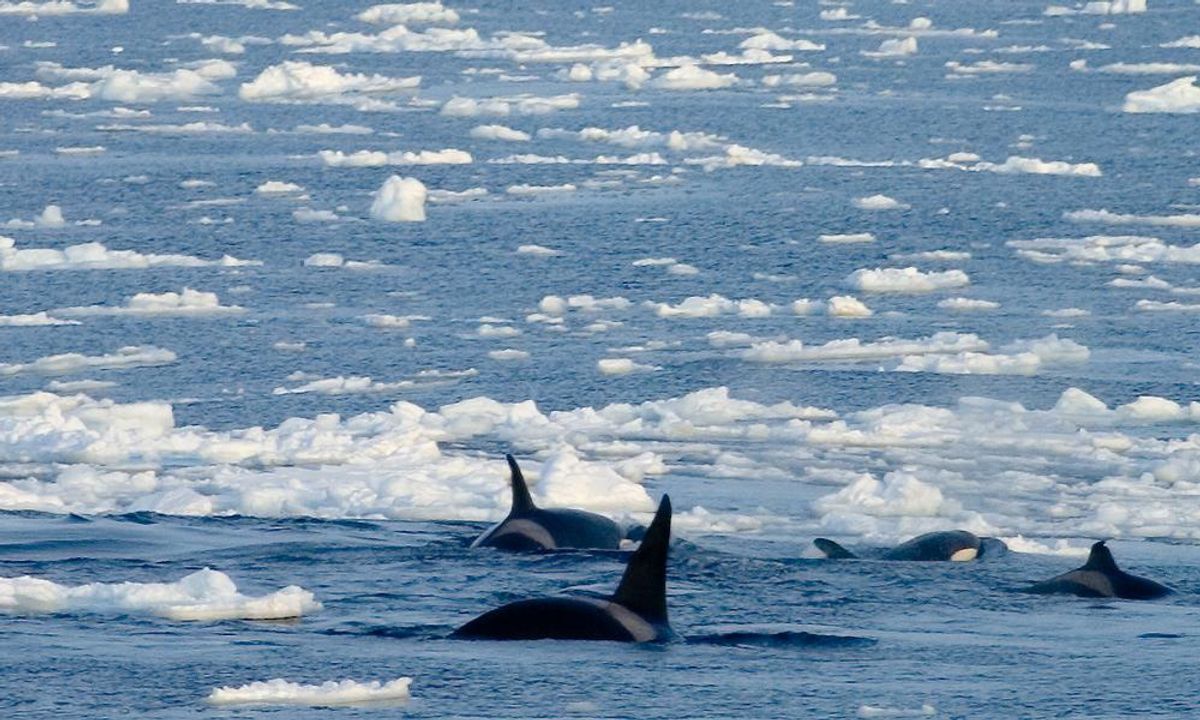Play all audios:
Claim: A 1922 newspaper article reported that "radical change in climatic conditions" was melting Arctic ice and disrupting wildlife. One of the key issues in the global warming
debate is whether modern scientists have sufficient data and tools to determine that current warming trends are indicative of long-term climatic changes rather than relatively short-term
weather pattern variability. A text widely shared online seemingly provides an example of the pitfalls of mistaking the latter for the former, purportedly reproducing a 1922 newspaper
article warning that the Arctic ocean was experiencing a radical change in climatic conditions which was warming its waters, melting ice, and disrupting wildlife: > The Arctic ocean is
warming up, icebergs are growing scarcer and in > some places the seals are finding the water too hot, according to a > report to the Commerce Department yesterday from Consulafft, at
> Bergen, Norway. > > Reports from fishermen, seal hunters and explorers all point to a > radical change in climate conditions and hitherto unheard-of > temperatures in the
Arctic zone. Exploration expeditions report that > scarcely any ice has been met as far north as 81 degrees 29 minutes. > Soundings to a depth of 3,100 meters showed the gulf stream
still > very warm. Great masses of ice have been replaced by moraines of > earth and stones, the report continued, while at many points well > known glaciers have entirely
disappeared. > > Very few seals and no white fish are found in the eastern Arctic, > while vast shoals of herring and smelts which have never before > ventured so far north, are
being encountered in the old seal fishing > grounds. > > ------------------------- > > _I apologize, I neglected to mention that this report was from > November 2, 1922.
As reported by the AP and published in The > Washington Post — 88 years ago!_ The text in the above example is a genuine transcription of a 1922 newspaper article, an Associated Press
account which appeared on page 2 of the _Washington Post_ on 2 November of that year: That article in turn was based on information relayed by the American consul in Norway to the U.S. State
Department in October 1922 and published in the _Monthly Weather Review_: > The Arctic seems to be warming up. Reports from fisherman, seal > hunters, and explorers who sail the seas
about Spitzbergen and the > eastern Arctic, all point to a radical change in climatic > conditions, and hitherto underheard-of high temperatures in that > part of the earth's
surface. > > In August, 1922, the Norwegian Department of Commerce sent an > expedition to Spitzbergen and Bear Island under the leadership of > Dr. Adolf Hoel, lecturer on
geology at the University of > Christiania. Its purpose was to survey and chart the lands adjacent > to the Norwegian mines on those islands, take soundings of the > adjacent
waters, and make other oceanographic investigations. > > Ice conditions were exceptional. In fact, so little ice has never > before been noted. The expedition all but established a
record, > sailing as far north as 81° 29' in ice-free water. This is the > farthest north ever reached with modern oceanographic apparatus. > > The character of the waters
of the great polar basin has heretofore > been practically unknown. Dr. Hoel reports that he made a section of > the Gulf Stream at 81° north latitude and took soundings to a depth
> of 3,100 meters. These show the Gulf Stream very warm, and it could > be traced as a surface current till beyond the 81st parallel. The > warmth of the waters makes it probable
that the favorable ice > conditions will continue for some time. > > In connection with Dr. Hoel's report, it is of interest to note the > unusually warm summer in Arctic
Norway and the observations of Capt. > Martin Ingebrigsten, who has sailed the eastern Arctic for 54 years > past. He says that he first noted warmer conditions in 1918, that >
since that time it has steadily gotten warmer, and that to-day the > Arctic of that region is not recognizable as the same region of 1868 > to 1917. > > Many old landmarks are
so changed as to be unrecognizable. Where > formerly great masses of ice were found, there are now often > moraines, accumulations of earth and stones. At many points where >
glaciers formerly extended far into the sea they have entirely > disappeared. As interesting as this nearly century-old article might be from a modern perspective, however, it isn't
substantive evidence either for or against the concept of anthropogenic global warming. As documented elsewhere, the warming phenomena observed in 1922 proved to be indicative only of a
local event in Spitzbergen, not a trend applicable to the Arctic as a whole.

